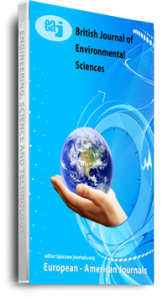For several decades, the Severn Estuary and Bristol Channel have been contaminated by heavy metals despite the many ecosystem services it provides. Therefore, this paper is devoted to the systematic assessment of heavy metals (Cd, Cr, Ni, Zn and Pb) pollution in soft sediments of the Severn Estuary and Inner Bristol Channel. An unpublished 2016 monitoring survey data of the Severn Estuary and Bristol Channel was obtained from the UK Environment Agency to assess seasonal variations, spatial distribution, exceedances, ecological risk, and potential sources of heavy metals. Seasonal variations between the concentration of heavy metals during summer and winter revealed that irrespective of seasons the concentration of heavy metals had the trend Zn > Cr > Pb > Ni > Cd. Concentrations of metals were higher in summer than winter, and there was a significant difference between metals concentration in summer and winter (P < 0.05). Spatial distribution of metals using the Empirical Bayesian Kriging (EBK) model revealed that irrespective of the seasons, concentrations of Cd, Cr, Ni, Zn and Pb in the distinct reaches of the estuary followed the trend Severn middle > Severn lower > Inner Bristol Channel > Severn upper. One-way ANOVA, which was followed by the Tukey’s HSD test, showed a significant difference between the mean concentration of heavy metals in the distinct reaches of the study area at p ≤ 0.05. Assessment of heavy metals using the USEPA Sediment Quality Guideline revealed that none of the reaches of the estuary was polluted with Cd. The Severn upper was not polluted with Pb. The Severn middle was moderately polluted by Ni but heavily polluted with Zn, Cr and Pb. Other reaches of the estuary were moderately polluted with Cr, Ni, Zn and Pb. Assessment of ecological risk of heavy metals using pollution indices such as geo-accumulation index (Igeo), contamination factor (CF), metal pollution index (MPI) and pollution load index (PLI) revealed that heavy metals such as Zn, Pb, Ni and Cr in the distinct reaches of the estuary and might pose an adverse effect on biota and ecosystem services of the Severn Estuary and Inner Bristol Channel. Identification of potential sources of metals using Pearson correlation, hierarchical cluster analysis (HCA) and principal component analysis (PCA) suggested that heavy metals all originated from anthropogenic sources.
Keywords: Heavy Metal, Soft sediment, Spatial Distribution, ecological risk, potential sources, seasonal variations

